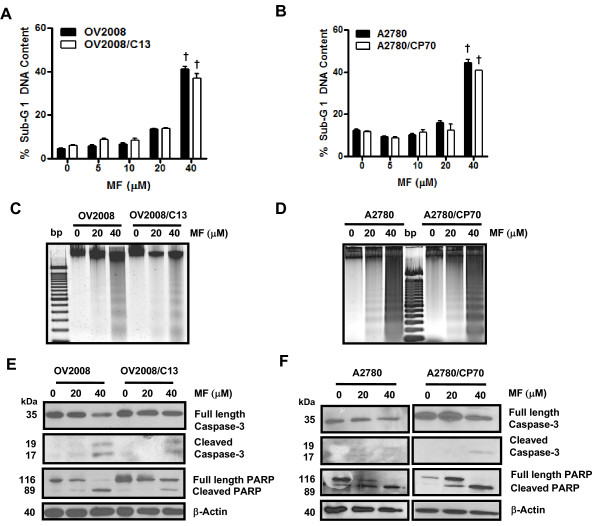Figure 4.
Sub-G1 DNA Content, DNA fragmentation, and activation of caspase-3 in OV2008, OV2008/C13, A2780 and A2780/CP70 cells treated with mifepristone. OV2008 and OV2008/C13 cells (A) or A2780 and A2780/CP70 cells (B) were treated with or without the depicted concentrations of mifepristone. Seventy-two hours later, floating and adherent cells were collected, fixed with 4% paraformaldehyde, stained with propidium iodide, and analyzed by microcytometric analysis using cell cycle software. †p < 0.001 vs. control (0 μM mifepristone). In a similar experiment OV2008 and OV2008/C13 cells (C) or A2780 and A2780/CP70 cells (D) were exposed to the various concentrations of mifepristone. Cells were harvested 72 h later, and genomic DNA was isolated, separated by electrophoresis on a 2% agarose gel, impregnated with SYBR Gold nucleic acid stain, examined with an ultraviolet transilluminator, and photographed. In another experiment, OV2008 and OV2008/C13 cells (E) or A2780 and A2780/CP70 cells (F) were exposed to various concentrations of mifepristone and harvested 72 h later. Whole cell proteins were isolated, equivalent amounts of proteins were electrophoresed, transferred to a PVDF membrane, and exposed to anti-caspase-3, anti-PARP, or β-actin antibodies.

